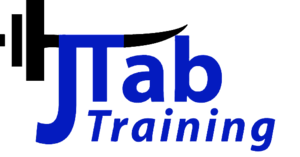There’s a popular weight loss drug running around (no pun intended) that you most likely have heard of. It’s known as GLP-1 or Semaglutide, and is most commonly found under the brand names Wegovy or Ozempic (note: only Wegovy has been authorized by the FDA for weight loss, while Ozempic is often used off label)
It “promises” weight loss at a good clip, and it delivers, but at what cost? Some are touting it as a miracle drug, while others claim that it causes more harm than good in the long run. Let’s see what science says.
Weight loss in theory is SIMPLE. Eat less than you burn and you will lose weight. This popular drug is helping that simple approach by making you full quicker and longer and cutting your “cravings” by regulating blood sugar. Click here to learn more about how Semaglutide works.
It does a good job at what it’s touted at. Yes, you WILL lose weight. The caveat is “at what expense”? Now, please note I am NOT a doctor or prescriber of this medication and can not speak to short/long term side effects or symptoms. As a certified trainer and nutritionist my focus is on the increasing news surrounding muscle loss, in addition to fat loss, while taking these kinds of drugs.
As I’ve written about before, it’s not just about weight loss. It should be about fat loss. Fat is inflammatory tissue that can have negative side effects on the body and increase your risks of a variety of health concerns like Heart Disease, Stroke, High Blood Pressure, Arthritis, Diabetes and more. Muscle mass, on the other hand, is anti-inflammatory tissue and increases our metabolic energy resulting in increased calorie burn while at rest, a stronger immune system, improved energy levels and better sleep.
New studies are coming out, finding that some people taking this drug are losing more muscle mass than what was expected. While this is concerning, I think it’s important to take a look at the lifestyle changes being made, not just the drug being taken. Because Semaglutide reduces your appetite dramatically, it’s easy for people to cut calories and lose weight without changing their diet (they’re just eating less than they were before) or adding in exercise into their routines. However, by not changing your bad habits, simply reducing your calorie intake overall will result in overall weight loss, both the good and bad kind.
So does this mean you shouldn’t look into a drug like this if you’re looking to lose fat? Not necessarily! Jtab is here to tell you there are a few key things to consider if you decide Semaglutide is right for you. (And quite frankly should be a part of your habits with or without the drug!)
Here they are in list view (I’m all about making it easy!)
1) Focus on protein. No, seriously! Are you getting as close to your bodyweight in protein each and everyday? Because you’re reducing the overall food your consuming, the actual meals that you do eat while on the drug NEED to be protein centric/based. This means adding good quality protein powders or bars into your routines if you struggle to get enough from your regular meals. IF you are lacking in vitamin/nutrients from veggies you can always supplement with a good food based multivitamin.
2) NEED to Strength Train! Building of strength and muscle during a weight loss period helps to KEEP as much muscle on your frame as possible. While we’ve all hear about cardio and weightloss, in reality serious strength training should be the first form of exercise while on any kind of weight loss drug or program. This keeps your body from disposing of muscle mass as it burns calories and keeps your muscle “important” to maintain.
Without these two important things, your weight loss WILL be lots of muscle, as it is metabolically demanding for your body to hold onto. This means that your body will want to “get rid of” it first, unless you are eating lots of protein and lifting weights. Not only will you FEEL the negative side effects of too much muscle loss, but you’ll see it in the mirror as well. Despite the scale going down you won’t see the true changes in your body that you’re looking for. Trust in the process, trust in the science!
Are you considering a weight loss program or drug? Reach out via email jtabtraining@gmail.com or via Instagram @Jtabtraining for help with nutrition guides, strength training programs and support!


